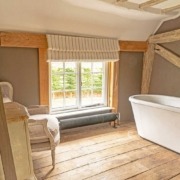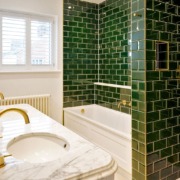How Do Air And Ground Source Pumps Work And Why Are They Such Money Savers?
Did you know that the government could pay you for using renewable heating methods in your home? Our team of highly skilled and professional gas safe plumbers incorporate a wide range of microgeneration energy sources into the renewable energy packages that we offer to our clients. This includes air and ground source heat pumps. If you are unfamiliar with this method of heating, let us explain how it works and why it’s such a great way to save money on your energy bills.nnBoth air and ground source heat pumps are renewable energy options that function by absorbing heat from natural sources through a series of buried underground piping networks. The contained water is then heated and distributed around your home through your boiler, radiators and/or water underfloor heating system. Much like water underfloor heating, air and ground source pumps function at a far lower temperature and last much longer than gas and oil systems. Although this heating method will never be completely carbon neutral as it runs off electricity, it does provide a more environmentally friendly option for heating your home. Having this system in place means that your heating is operating free of the major carbon emissions that come as an unwelcome side effect of traditional heating methods. There is a lot to consider when contemplating making the switch to renewable energy- here are just some of the many benefits this form of heating has to offer
Advantages of Air and Ground Source Heating
- Under the Renewable Heat Incentive Scheme (RHI) set up in the United Kingdom, you may be eligible for quarterly payments.
- Once installed, these heat pumps won’t just heat your home, they can be reversed in summer to function as a cooling system.
- After the installation process is complete, air and ground source heat pumps require minimal maintenance.
- Air and ground source heat pumps are cheaper to run than gas and oil boilers, which means that your monthly payments will be much more affordable.
- They have a longer life span than other heating methods (lasting up to 50 years after installation).
- They are suitable for installation throughout the United Kingdom and planning permission is generally granted to those seeking the installation of air and ground source heating For further information, please check with your local authority before commencing any work.
- These heat pumps are environmentally friendly and greatly reduce your carbon footprint.
Disadvantages of Air and Ground Source Heating
- The initial installation cost can often be high. However, it is important to note that these systems offer longevity and require little to no servicing after they are installed. If you would like to know the costing of a project like this, get in touch today for a free and no obligation quote.
- These can be complex heating systems to install, but with an experienced team in place, this isn’t something that will greatly impact you our lifestyle.











